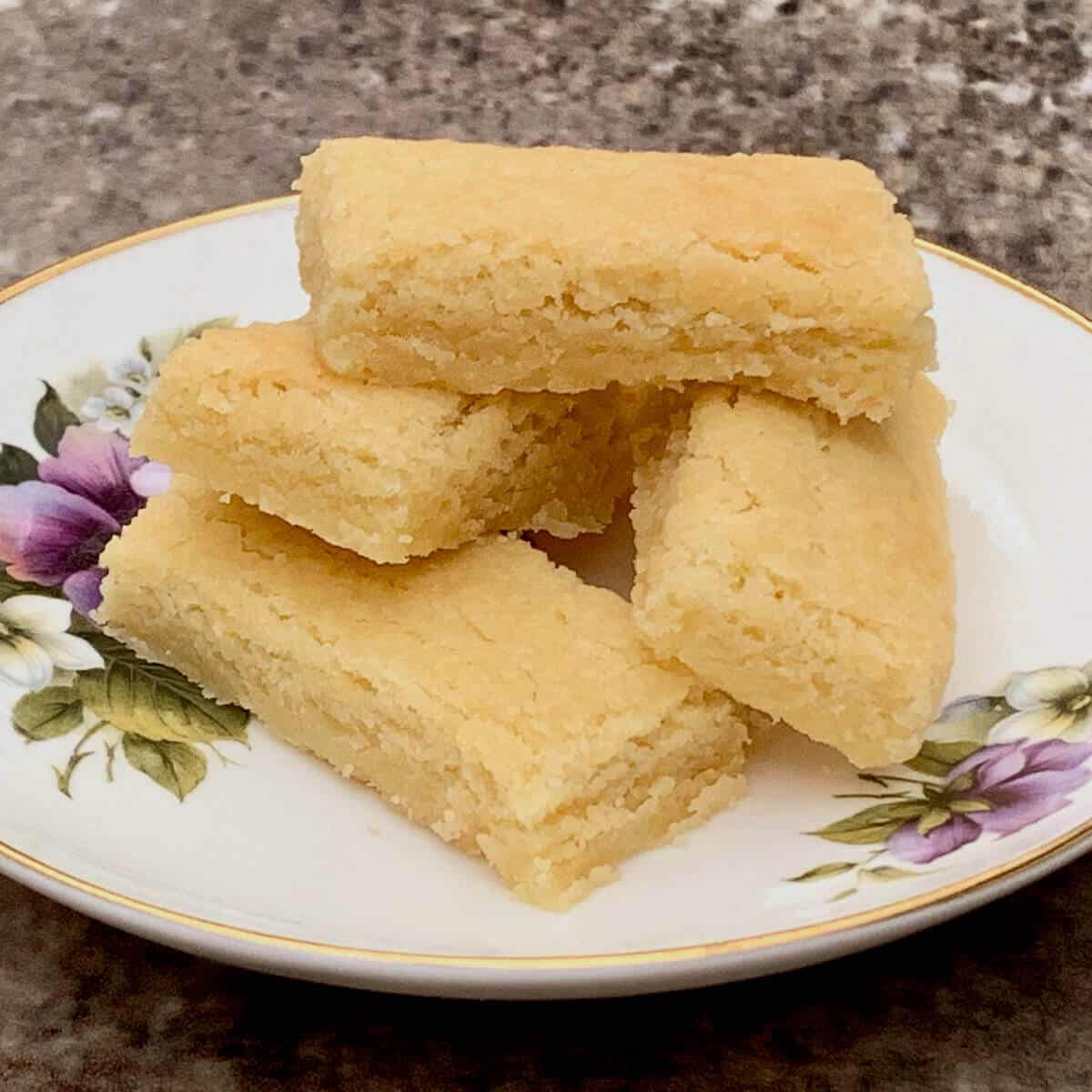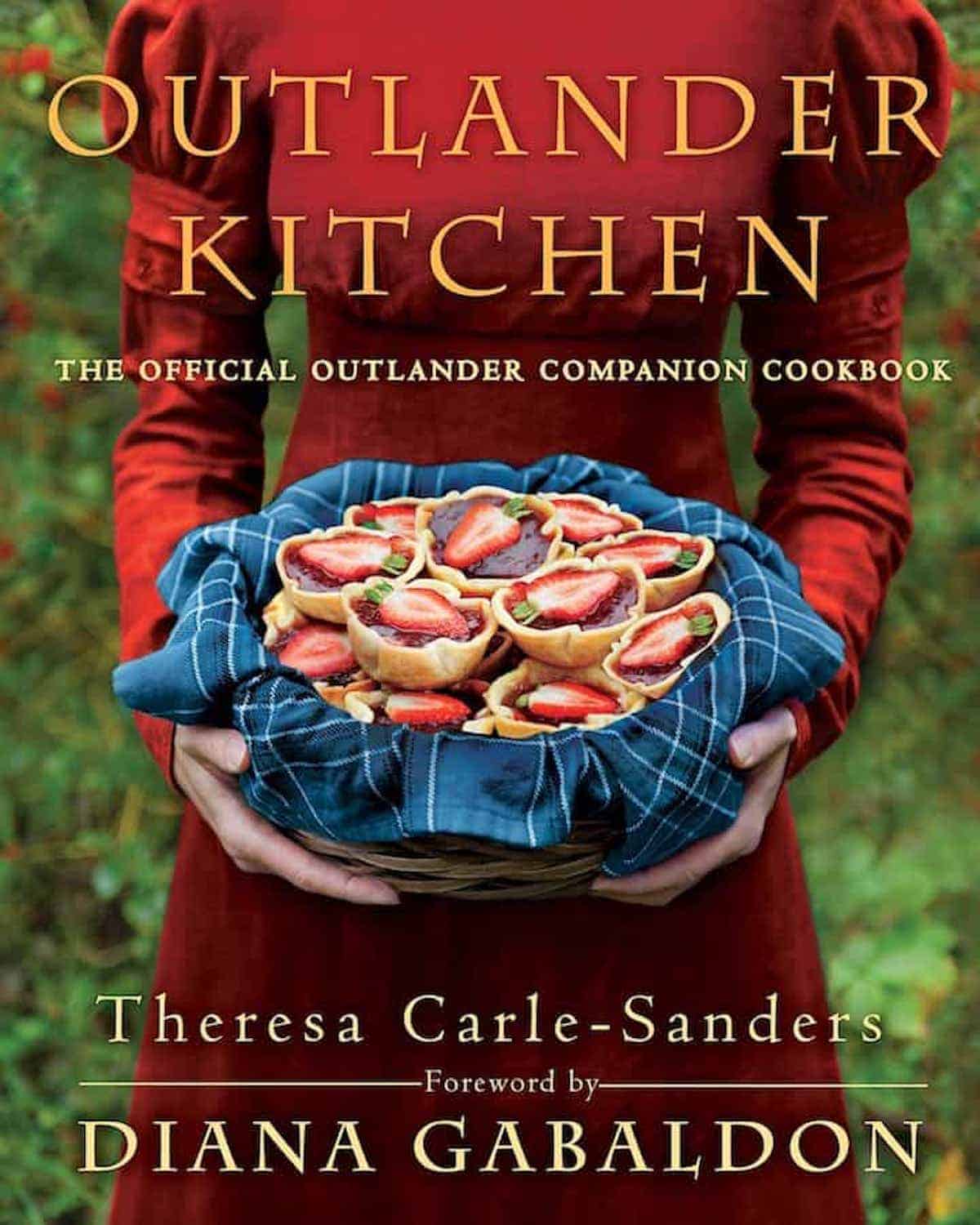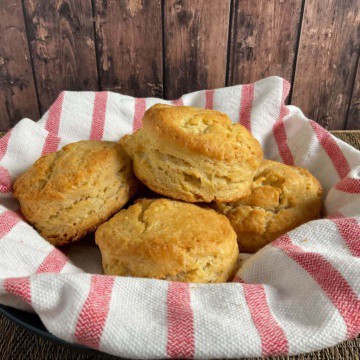What I love about baking is how it melds magic and science. Throw in a little kitchen math using recipe ratios, and now you're talking my language! I'll explain my use of culinary math, where Outlander fits in, and my baking philosophy.

Jump to:
And now to explain the "& Scones" in the website title.
As I mention in my About Tammy bio, I love cooking and especially love baking. Where else do you get the melding of magic and science?
What magic, you say?
Look what happens when flour, sugar, and butter are combined and subjected to heat - Scotch shortbread appears! Voila! Well, maybe not quite "voila" but you get the idea. Disparate ingredients coming together to form something entirely new.
As a former rocket scientist (years ago I worked as an Aerospace Engineer in the Space Shuttle program), the science of cooking intrigues me as well. Knowing how the different ingredients react with each other is important. Will they complement the flavor you're trying to get? Foam over and cause a huge mess in the kitchen?
Converting from Volume to Weight
I use a kitchen scale when I'm cooking, and especially when I'm baking. It makes recipe instructions so much more repeatable.
For example, if a recipe calls for a cup of flour, do you sift the flour first to fluff it up? Pack it in? It's so much more precise to weigh out a cup of flour (120 grams) than to scoop up and level.
More often than not, when I'm looking at recipes (and I look at a lot of recipes from various blogs I follow and emails I receive), I'll convert the volume measurements to weight.
Once you start thinking in those terms, it starts to become clear that most basic baking recipes are variations on one another. Similar in terms of the proportions of the ingredients in the recipe, differing only in the specific ingredients used.
[Nerd Chef alert: I going to talk about numbers and stuff. Proceed with caution. Skipping this paragraph is acceptable and will not diminish your enjoyment of the rest of this post]
Kitchen math and recipe ratios
Chef and food writer Michael Ruhlman wrote a very helpful book called Ratios: The Simple Codes Behind the Craft of Everyday Cooking.
In it he explained that if you looked at the recipe ratios of the component ingredients in a recipe in terms of weight, then making that recipe becomes just a matter of remembering the ratio, using your desired form of those ingredients. All you need is a kitchen scale.
If all this sounds too "math-y," don't despair. It's really not that hard.
How to measure biscuits ingredients using ratios
Let me give an example. A biscuit has the ratio of 3-1-2 (3 parts flour, 1 part fat, and 2 parts liquid). To make a basic biscuit I'd measure out 9 ounces (250 grams) of flour, 3 ounces (85 grams) of butter (my fat of choice), and 6 ounces (170 grams) of whatever liquid I'm using (ice water, cold buttermilk, etc.).
I'd also include 1 teaspoon of baking powder and ½ teaspoon of salt for each 5 ounces (140 grams) of flour I'm using. In this example, I'd mix 2 teaspoons of baking powder and 1 teaspoon of salt into the flour before continuing with the recipe.
[Side Note: yes, I use weight measurements (grams) instead of volume measurements (cups) when I weigh liquids. Here's my policy where I explain why.]
How to measure scone ingredients using ratios
A scone is just an enriched biscuit (meaning eggs are added), so I'd use the same 3-1-2 ratio, and count the egg into my measurement of the liquid.
One egg is about 2 ounces (56 grams), so in this example I'd use about 4 more ounces (113 grams) of liquid (in this case, probably cream).
For scones I'd also add 1 Tablespoon of sugar for every 5 ounces (140 grams) of flour, plus any mix-ins I might want to put in (chocolate chips in scones are practically a must in my family).
Same ratio, different result altogether.
Ok, I got pretty technical here, but I hope you see my point. By knowing the ratio and varying the ingredients, I can riff on a lot of different recipes.
I encourage you to read Ruhlman's book. It really changed how I think about baking and gave me the confidence to get creative without having to always follow a recipe.
And that, Dear Reader, is baking science in action!

Baking and scotch
So I've explained why I love baking (magic and science), but what does that have to do with Outlander, Scotland, or scotch?
Well, really nothing, except that when I explained how I became hooked on all things Outlander, I then became interested in cooking and baking Scottish dishes, then English dishes, and it just blossomed from there.
I wanted to know if I could make real Scottish shortbread (Walker's shortbread is expensive here in the US, and you don't get a lot in the package to boot). How about beef pasties? Just what are "bannocks" anyway?
Don't even get me started on scones...I love cream scones. I've been taking my daughters for High Tea on their birthdays since they were each 5 years old (they're 24 and 21 now), and we've gone to many an English tea room. To my American palate, scones are quintessentially British, and I'm definitely an Anglophile.
Outlander fans and Outlander chefs
Remember how I said that there's a huge community of fans in the Outlander world? Yes, there are people as obsessed as me, maybe more so.
Last year a wonderful chef and Outlander fan named Theresa Carle-Sanders released a cookbook called Outlander Kitchen (based on her popular website) where she tied various Scottish, English, and American dishes to passages from the Outlander series of books.
It's a helpful resource, and fun to look through. Theresa was very clever in tying certain characters and scenes from the books to the recipes she presented. I really enjoy trying out her recipes.

A healthy approach to baking
Now, like everyone else I have restrictions on what I can make. My family is very picky, so I whittle down what I'd like to make to things I think they'll at least try.
I like most everything, but I won't eat pork (yep that's right, no bacon for me), beets (just not a fan), and I don't want to go gluten-free (luckily, gluten & I get along). My tastes have changed as I've aged, so I tend to like things less sweet now, and some milk products just don't agree with me.
All this is to say is that while I love to experiment, I'll pass up recipes that I can't adapt to my needs.
Finally, I've tried to be wiser (read: healthier) in what I cook, so I use wholesome ingredients as much as possible instead of commercial ones (e.g., I make and can my own chicken and beef stock). A lot of the time now I won't buy things in the store that I know I can make using ingredients I can pronounce (without needing a degree in chemistry).
And besides, homemade pudding is so much better than the stuff you get from a box!
(Oh my...stop the ranting, and get on with it!)
Scotch & Scones' recipe philosophy
Ok, here goes. What I plan to do on this half of the blog is to present a recipe that we can talk about. And I do mean we. I welcome and encourage you to comment on the recipes discussed, and definitely suggest more things for me to try.
If I can adapt them using ingredients that I can find in American groceries (see my limitations above), we can make them together.

As this post has gone on long enough, I'll save the first recipe discussion for the next post. You know, always leave 'em wanting more...
(insert evil laughter here while rubbing hands together with glee) (cough, cough...)





Let's Talk